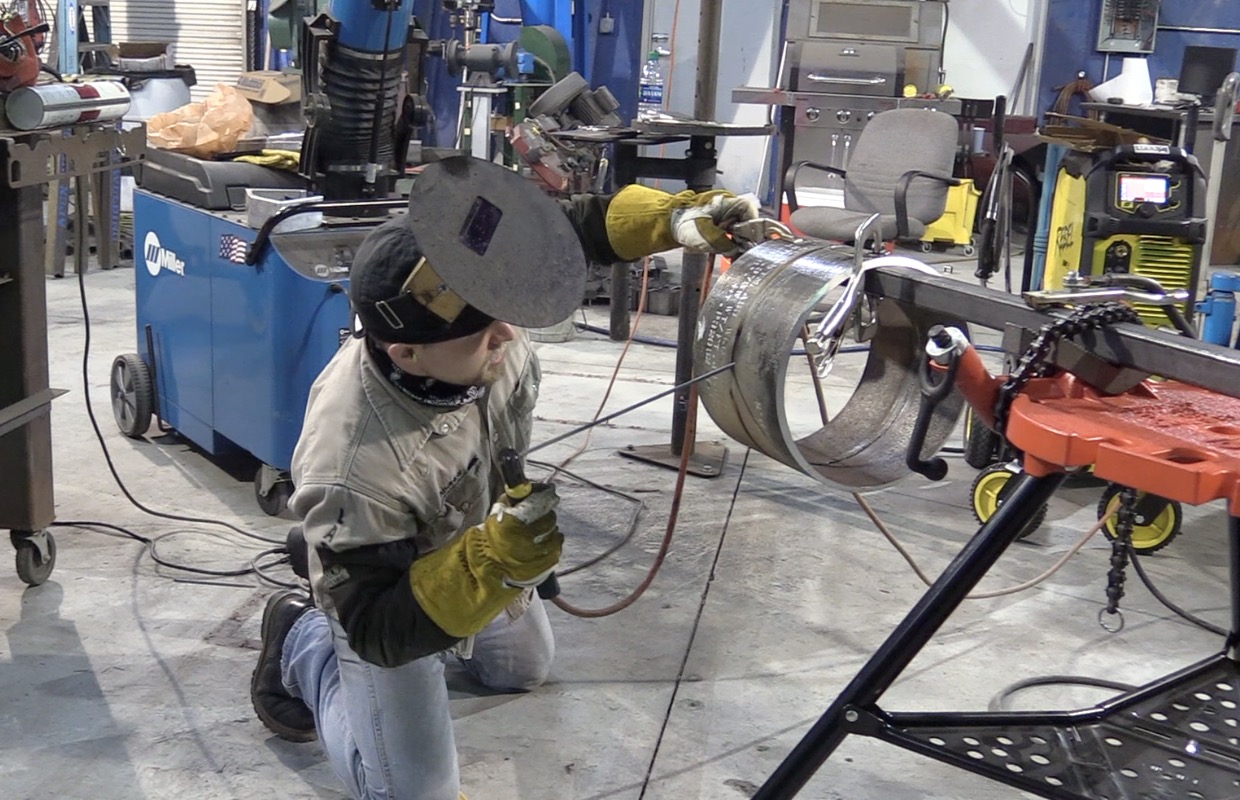5g Downhill Pipe Welding Test per API 1104
In this video, you will see Tips and Techniques for passing a 5g downhill pipe welding test (API 1104 code) welded using 6010 and 7010 hyp electrodes...all downhill per api 1104
- The Root pass was welded at 125 amps using a 5/32" 6010 electrode.
- The fitup was a 3/32" gap and 3/32" land with 30 degree bevels.
- Hot pass was done using a 3/16" 7010 electrode at 155 amps.
- All fill passes were also welded at 155 amps.
- Cover pass was welded at 145 amps all with 3/16" 7010 hyp electrodes
(hyp stands for high yield pipe where yield is yield strength)
Body positioning for a 5g downhill pipe welding test

Just the fact that pipe is round requires the welder to change body positions as he welds in order to maintain a favorable electrode angle.
Electrode angle is pretty forgiving on the top portion of a 5g pipe welding test but less forgiving on the bottom half.
So body positioning is something worth practicing.
And its good to practice it before the hood drops.
Think it thru, go thru the motions several times making sure it all feels comfortable and that you can not only maintain a good rod angle...but make sure that you can maintain a good line of sight also.
By practicing body positioning with intention, you can create muscle memory.
Can you imagine taking a 5g pipe welding test and the root pass is going in perfect....and then you notice your whip hanging up on something?
You might even need to stop and restart.
Not the end of the world on a pipe joint...it happens all the time.
But on a welding test, when you are really needing the job and are possibly a bit nervous, the last thing you need is an extra restart.
Hot Pass
Andrew welded the root pass at 125-130 using 5/32 6010 rods.
For the hot pass he jumped up to 155 amps using 3/16" electrodes.
In my opinion, there are 2 main objectives for any hot pass on a pipe welding test.
- dont get any lack of fusion or inclusions between the root and hot pass
- dont mess with the root...that means dont melt thru or alter the root
For this video, Andrew ground the root smooth.
This was part of the procedure Andrew is required to do where he works
but that is not always allowed or required.
All fill passes were wire wheeled before welding the subsequent pass.
The cover pass was welded at 145 amps.













